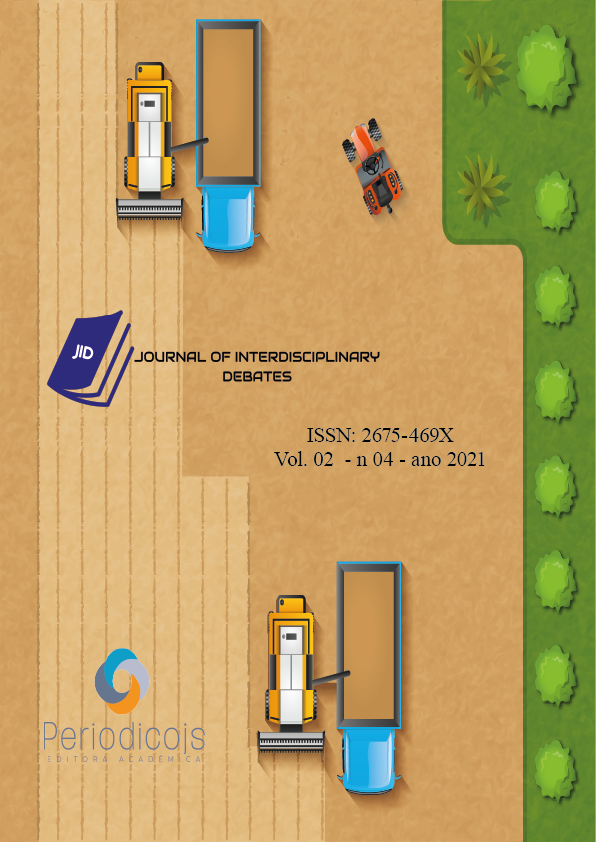Abstract
The corn crop is of great importance for Brazilian agriculture and can be influenced by several factors that interfere in the final productivity, among which the correct management of soil fertility stands out, carrying out a correct fertilization to achieve a high yield. The objective of this work was to evaluate the development and productivity of maize subjected to different doses of phosphorus, potassium and nitrogen, constant, and to evaluate the effect of inoculating seeds with phosphorus and potassium solubilizing and N-fixing bacteria. conducted in the experimental area of the Center for Agricultural Sciences at the Federal University of Campina Grande (UFCG) (CCTA), in – PB. The experiment was in randomized blocks, with 10 treatments and 6 replications, the treatments corresponded to the combinations of NPK mineral fertilizer with doses of 0%, 50% and 100% of the crop need and soil conditioning bacteria AzotoBarvar-1® fixing bacteria nitrogen, PhosphoBarvar-2® bacteria with phosphorus solubilizing action and PotaBarvar-2® bacteria with potassium solubilizing action. T1 = Control (without mineral fertilizer and soil conditioning bacteria); T2 = with 100% of the mineral fertilizer recommended for the crop; T3 AzotoBarvar-1® with addition of 100% PK; T4 = AzotoBarvar-1® with addition of 50% nitrogen plus 100% PK; T5 = PotaBarvar-2® with addition of 100% NP; T6 = PotaBarvar-2® with addition of 50% potassium plus 100% NP; T7 = PhosphoBarvar-2® with addition of 100% NK; T8 = PhosphoBarvar-2® with addition of 50% phosphorus plus 100% NK; T9= Nitrogen Barvar-2®; PotaBarvar-2®; PhosphoBarvar-2®; T10= Nitrogen Barvar-1®; PotaBarvar-2®; PhosphoBarvar-2® with addition of 50% NPK. Plants were grown in pots with a capacity of 45 dm3 for 59 days, mean plant height (ALP) and leaf length (CF) 28 days after plant emergence and Leaf number (NF) 5 days after emergence of plants submitted to NPK fertilization and soil conditioning bacteria, 49 days after germination. Where there was interaction between treatment and cultivar. During this period, the plants were evaluated for growth, dry matter accumulation and production. The association of soil conditioning bacteria, with a dose of 50% fertilization with NPK, which promoted greater ear size, production and height of maize plants when compared to the treatment without bacterial inoculation. It is concluded that the highest values obtained for the growth and physiological parameters were observed in the treatments in which the soil conditioning bacteria via seeds and fertigation were used.
References
BENTO, R. U.; PELÁ, A.; RIBEIRO, M. A.; SILVA, J. A. G.; CRUZ, S. J. S. Contribuição de Bioestimulantes contendo Microrganismos Rizosféricos na Absorção de Fósforo pelo Milho. Revista Brasileira de Milho e Sorgo. v.15, n.3, p. 572-581, 2016.
BERNAL, P.; ALLSOPP, L. P.; FILLOUX, A.; LLAMAS, M. The Pseudomonas putida T6SS is a plant warden against phytopathogens. Journal International Society for Microbial Ecology. v. 11, p. 972-987, 2017.
CAIRES, E. F.; MILLA, R. Adubação nitrogenada em cobertura para o cultivo de milho com alto potencial produtivo em sistema de plantio direto de longa duração. Revista Bragantia. v.75, n.1, 2016.
Coelho. A. M. Nutrição e Adubação no Milho. EMBRAPA Milho e Sorgo. Circular Tecnica 78. 2006.
CONAB. Companhia Nacional de Abastecimento. Acompanhamento de safra brasileira: grãos: décimo levantamento: julho 2020. Safra 2019/2020. v. 7 Brasília, DF, 2020. Disponível em: <http://www.conab.gov.br>. Acesso em: 25 de jul. 2020.
FENG, Y.; SHEN, D.; SONG, W. Rice endophyte Pantoea agglomerans YS19 promotes host plant growth and affects allocations of host photosynthates. Journal of Applied Microbiology. v. 100, p. 938-945, 2006.
FERREIRA, M. M. M. Sintomas de Deficiência de Macro e Micronutrientes de Plantas de milho Híbrido BRS 1010. Revista Agroambiente Online. v. 6, n. 1, p. 74-83, 2012.
Insumos Biologicos: Azotobarvar, Potabarvar, Phosphatebarvar, Green Biotech Brasil. Disponível em: < http://www.greenbiotech.com.br/> acesso em: 05 de junho de 2020
LUZIATELLI, F.; FICCA, A. G.; MELINI, F.; RUZZI, M. Genome Sequence of the Plant Growth-Promoting Rhizobacterium Pantoea agglomerans C1. Journal American Society for Microbiology. v. 8, n. 44, p 1-2, 2019.
MELLÉM JÚNIOR, N. J.; MAZZA, J. A.; DIAS, C. T. S.; BRISKE, E. G. Efeito de Fertilizantes Nitrogenados na Acidificação de um Argissolo Vermelho Amarelo Latossólico Distrofico Cultivado com Milho. Amapá ciênc. e tecnol., Macapá, v.2, n.1, p. 75-89, abro 2001.
NASCIMENTO, M.; MONTE, M. B. M.; LOUREIRO, F. E. L. Agrominerais – Potássio. IN: LUZ, A. B.; LINS, F. A. F. Rochas e minerais industriais. Rio de Janeiro, p. 175-203, 2008.
NATZKE, J.; NOAR, J.; BRUNO-BÁRCENA, J. M. Azotobacter vinelandii Nitrogenase Activity, Hydrogen Production, and Response to Oxygen Exposure. American Society Microbiology. v. 84, n. 16, p. 1-10, 2018.
PACHECO, C. A. P.; PARENTONI, S. N.; GUIMARÃES, P. E. O.; GAMA, E. E. G.; MEIRELLES, W. F.; FERREIRA, A. S.; CASELA, C. R.; SILVA, A. R.; GUIMARÃES, L. J. M.; ROCHA, L. M. P.; GARCIA, J. C.; CARDOSO, M, J.; CARVALHO, H. W. L.; PAES, M. C. D.; COSTA, R. V. BRS 2022: Híbrido Duplo de Milho. EMBRAPA Milho e Sorgo. Comunicado Tecnico 174. 2009.
RODRIGUES, R. B.; OZORIO, L. M.; PINTO, C. L. B.; BRANDÃO, L. E. T. Opção de troca de produtos na indústria de fertilizantes. Revista administração. v. 50, n. 2, p. 129-140, 2015.
SILVA, R. L. L.; SILVA, C. G. M.; MOREIRA, S. G.; GUTIÉRREZ, A. M. Marcha de absorção de nutrientes em cultivares de milho. XXXI Congresso Nacional de Milho e Sorgo. Bento Gonçalves – RS. p. 210 – 213, 2016.
SILVA, S. Plantas Forrageiras de A a Z. Aprenda Facil. 2ª Edição, Viçosa – MG, 311p. 2014.
SIMÃO, E. P.; RESENDE, A. V.; GONTIJO NETO, M. M.; BORGHI, E.; MARTINS, D. C.; VANIN, A. Demanda de Nutrientes Pelo Milho Safrinha em Função da Época de Semeadura e Adubação. Revista Brasileira de Milho e Sorgo. v.16, n.3, p. 481-494, 2017.





